Market History
Our History
The Pike Place Market has been a defining Seattle icon for more than a century. Scroll through the decades to learn how we became one of the oldest and largest continuously operating public markets in the United States.
Want to learn more about Pike Place Market? Download our recently released free digital book. Inside: Pike Place Market.
1900-1909
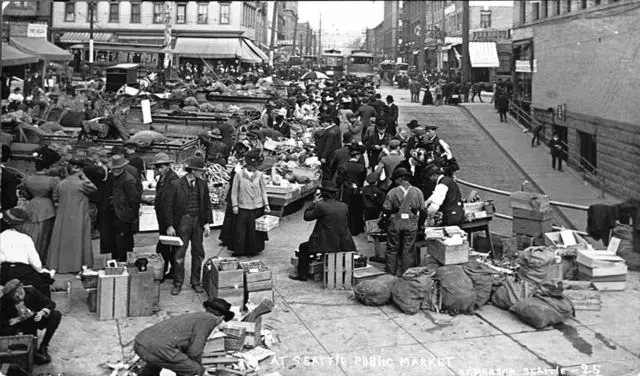
August 5, 1907
The Seattle City Council passes Council Member Thomas Revelle's ordinance to create a public farmers market on Pike Place.
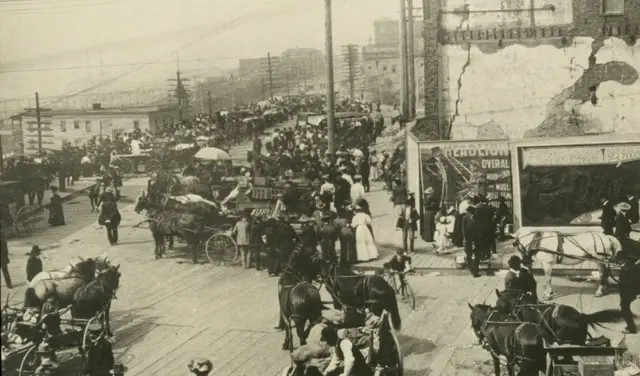
August 17, 1907
Six to 12 farmers bring their produce-filled wagons to Pike Place on opening day. They sell out by lunchtime.
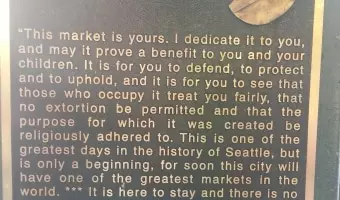
November 30, 1907
Seattle City Councilman Thomas Revelle dedicates the Market to the people of Seattle after Frank Goodwin completes construction of the first building.
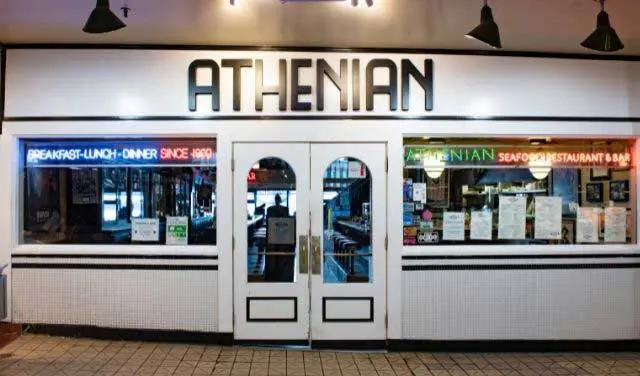
1909
Athenian Inn opens, with three Greek brothers as the owners.
1910-1919
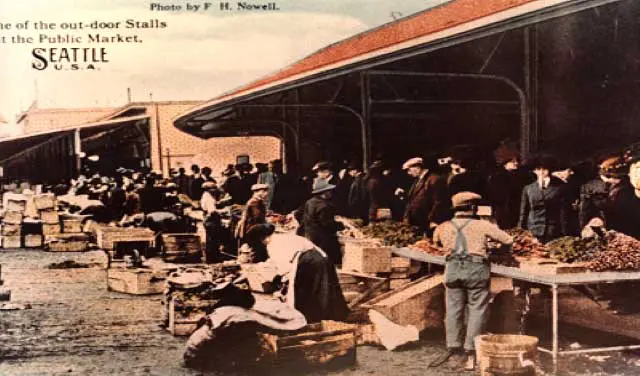
1910
Stalls are added thanks to a $10,000 contribution from the City of Seattle. The Sanitary Market building opens as well.
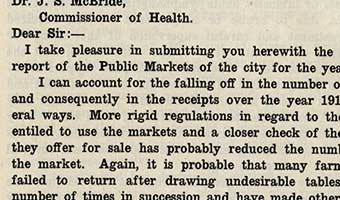
1911
The Seattle City Council creates the jobs of Market Inspector (later changed to Market Master), Assistant Market Inspector, and Janitor.
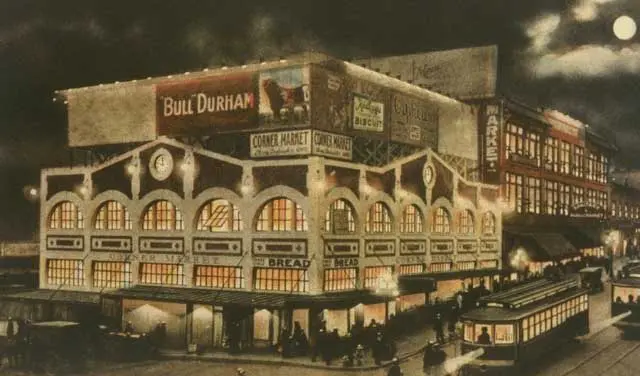
1912
The Corner Market building opens, with Three Girls Bakery as one of the shops.
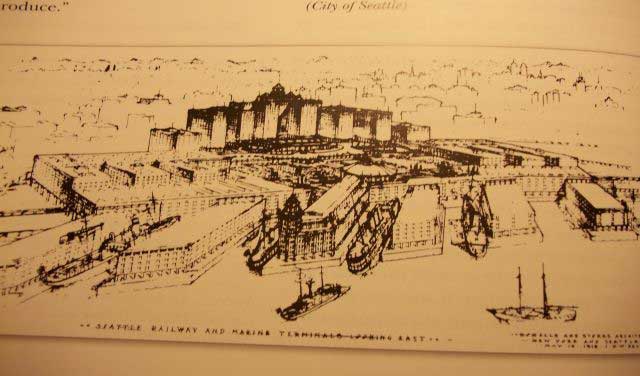
1913
The first of many proposals to create a new look to super-size the Market is rejected by Seattle voters.
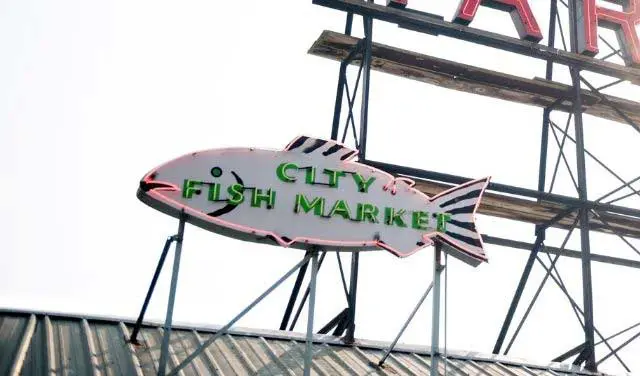
1918
The City of Seattle creates City Fish to counter the high price of fish.
1920-1929
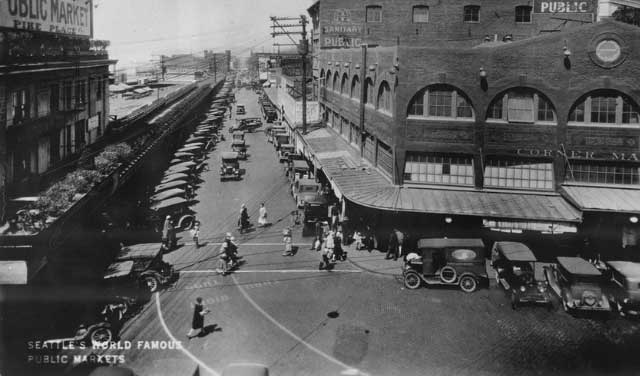
1922
With construction complete, the configuration of the Market looks much like it does today. A branch of the Seattle Public Library opens on the lower floor.
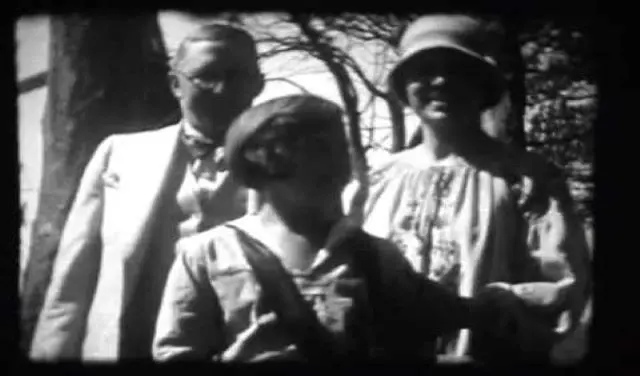
1926
Arthur Goodwin takes over as manager of the Market from his uncle Frank.
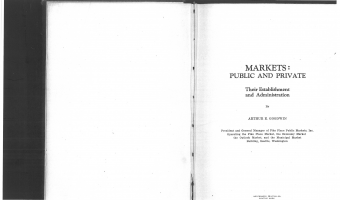
1929
Arthur Goodwin's book, "Markets: Public and Private" is published, which becomes a textbook for the creation of other markets.
1930-1939
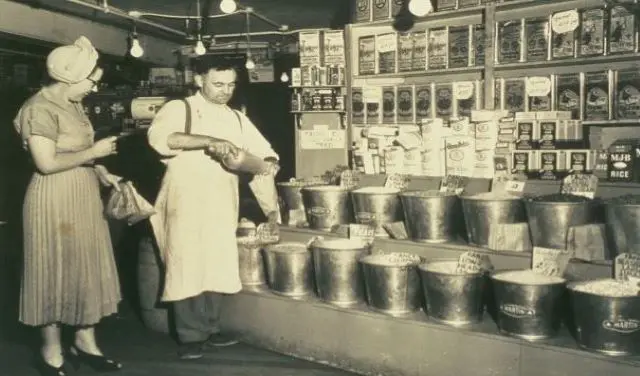
1930
Delivery man Peter DeLaurenti marries Mamie-Marie Mustelo, who works for her mother's grocery. In 1946 they purchase the grocery and create DeLaurenti.
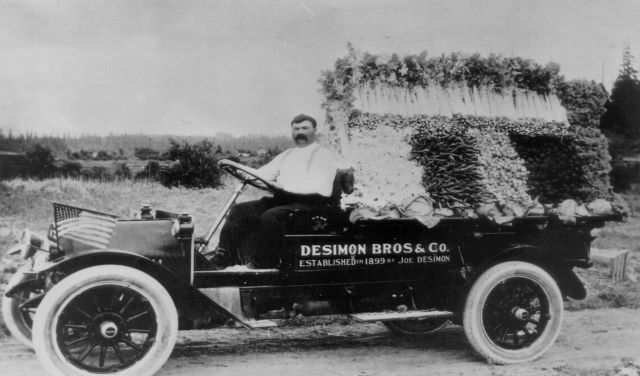
1933
Farmer Giuseppe "Joe" Desimone owns more than half the shares in the Pike Place Public Market Company, making him the major decision maker.
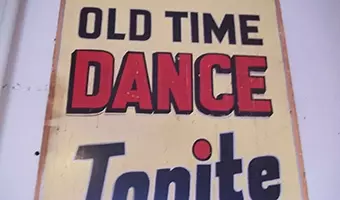
1935
Dance Hall operates in the Economy Market Building. During the Depression, the Market was a central community gathering place as well as a major food center.
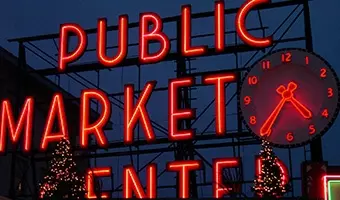
1937
Our iconic Public Market Clock Sign is installed.
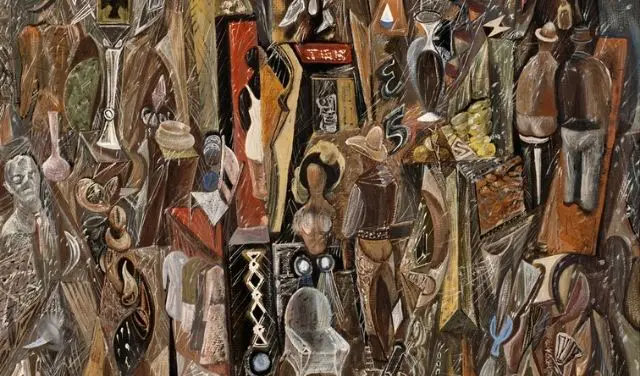
1938
Artist Mark Tobey begins a years-long chronicle of the Market in sketches and paintings.
1950-1959
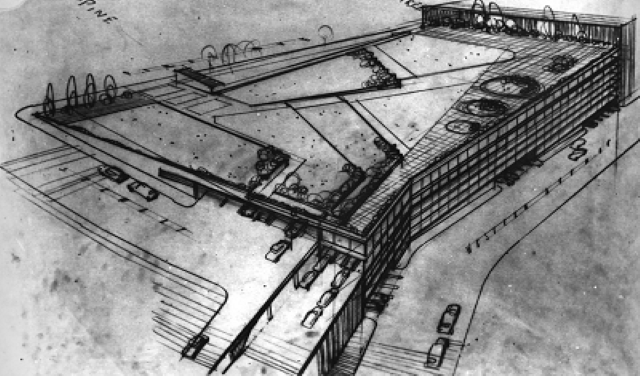
1950
Engineer Harlan Edwards, husband of Seattle City Council member Myrtle Edwards, proposes development in the Market that includes a 1,500-car parking garage.
1960-1969
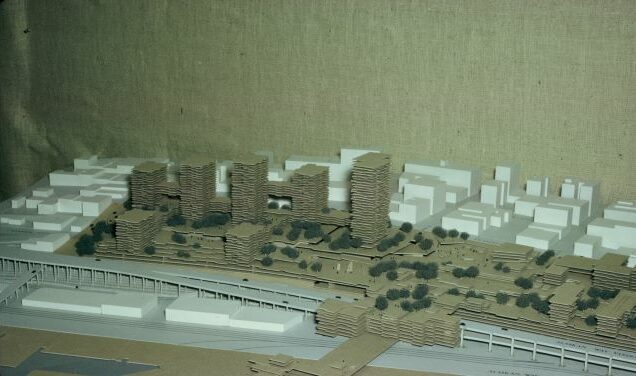
1963
Pike Plaza Project proposed to rejuvenate the Market (urban renewal). Skyscrapers would replace most Market buildings. The plan is backed by the mayor.
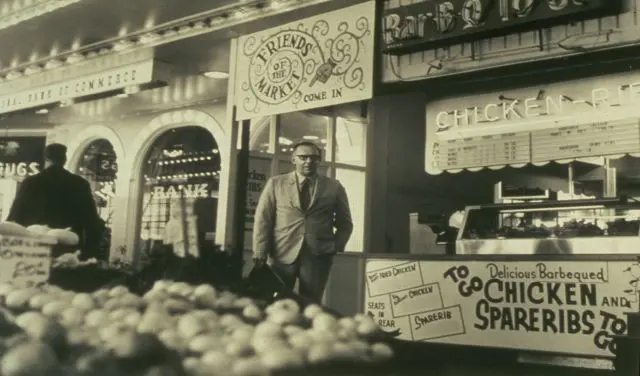
1964
Friends of the Market, led by architect and civic activist Victor Steinbrueck, forms to oppose plans to redevelop the Market.
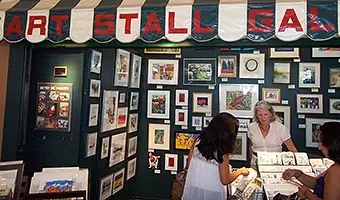
1965
Art Stall Gallery, a cooperative owned by a dozen women, opens.
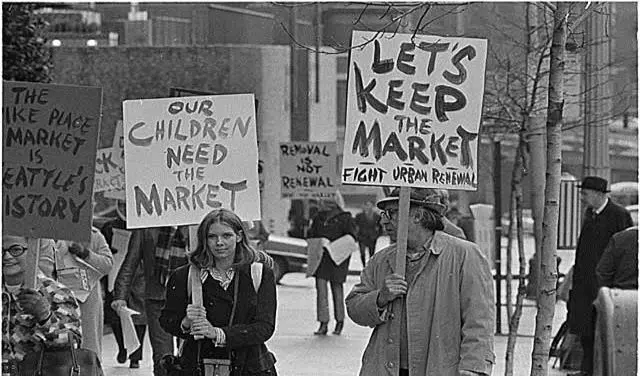
1969
Friends of the Market gathers 53,000 voter signatures to save the Market from the wrecking ball.
1970-1979
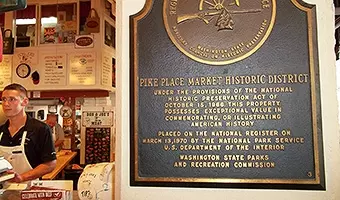
1970
1.5 acres in Pike Place Market are listed on the National Register of Historic Places. A larger area is added to the historic district listing in 1972.
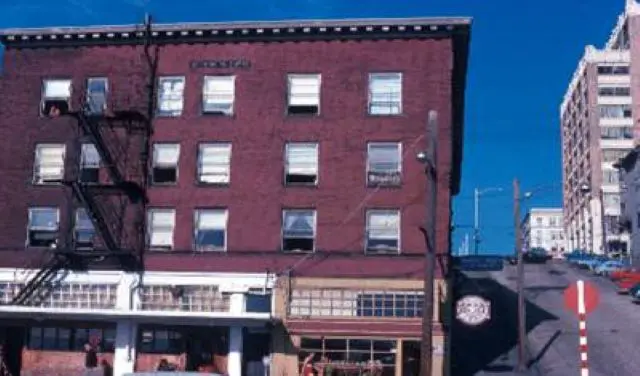
March 30, 1971
The first Starbucks opens on March 30 at Pike Place and Virginia Street.
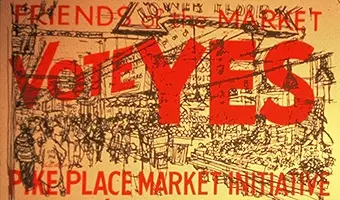
November 2, 1971
Seattle voters approve Initiative 1 to "Keep the Market" from the wrecking ball.
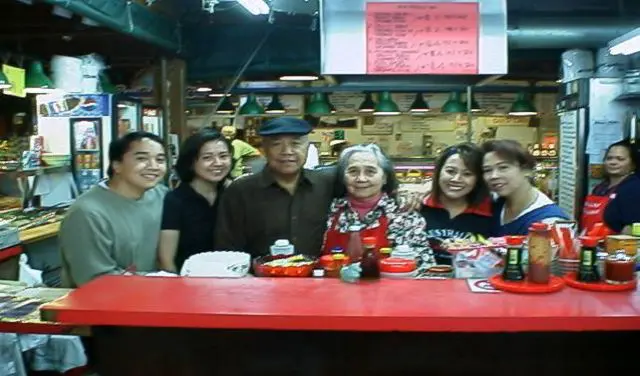
1973
Oriental Mart opens. It is still owned by the original family, the Apostols.

1973
The Pike Place Market Preservation and Development Authority (PDA) is created by the City of Seattle to act as public trustee of the Market.
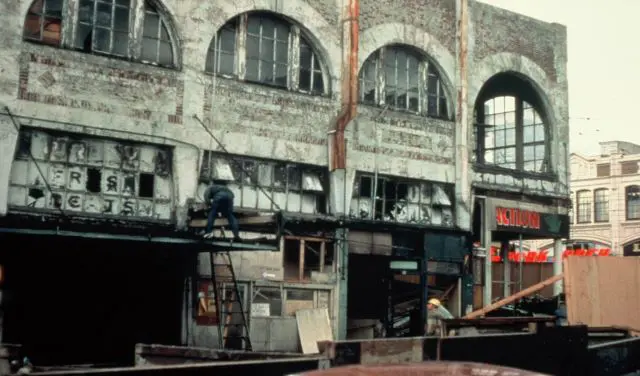
1974
The Market is renovated. $135 million is spent on renovation ($60 million in federal funds, $75 in private investment).
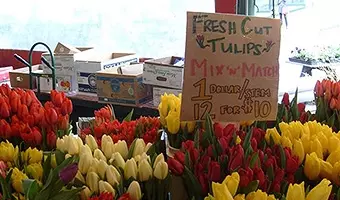
1976
Alm Hill Gardens Farm starts selling on Market farm tables; today they have the distinction of being the farmer with the most seniority.
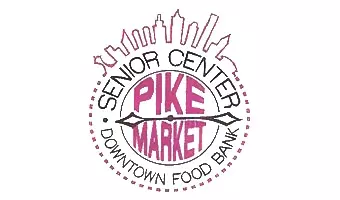
1977
Pike Market Senior Center starts in location of a former biker bar.
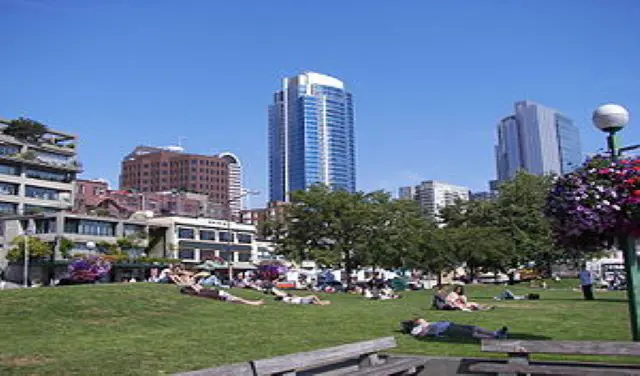
1978
A park honoring Victor Steinbrueck opens on a former site of an armory.
1980-1989
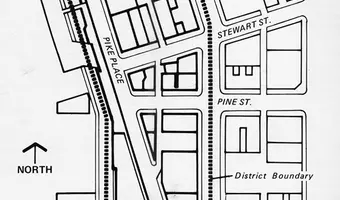
1980
The PDA completes acquisition of 80 percent of properties in the Market historic district.
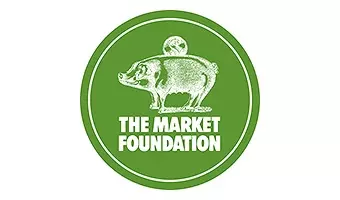
1982
The Market Foundation is created to help raise funds for the Market's social service agencies.
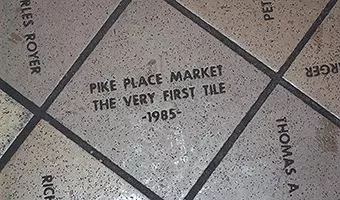
1985
A campaign begins to recruit donors who for $35 can have a name placed on a floor tile. Over 46,000 named tiles line the arcade.
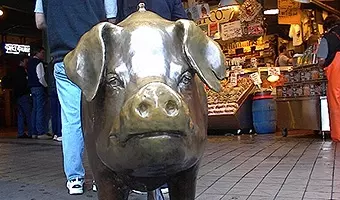
1986
Rachel the piggybank, which collects over $10,000 each year for the Market's child care, food bank, medical clinic and senior center, debuts.
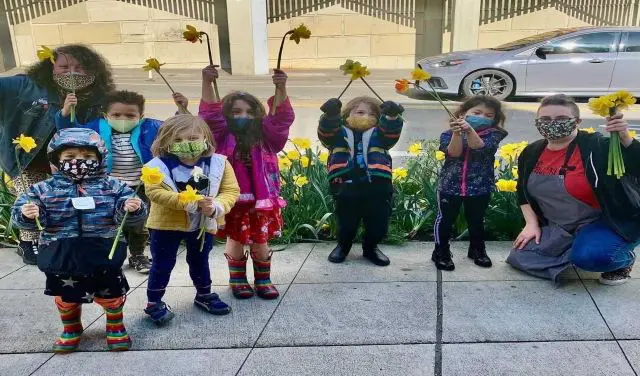
1987
The first-ever Rudy Bruner Award for Urban Excellence Gold Medal is given to Pike Place Market in recognition of the Market Foundation's social services.
1990-1999
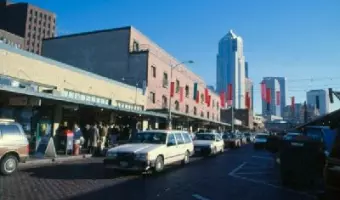
1991
Pike Place Market PDA and the Urban Group settle a years-long dispute over ownership rights of Market properties.

1992
Piroshky Piroshky opens in the Market.
2000-2009
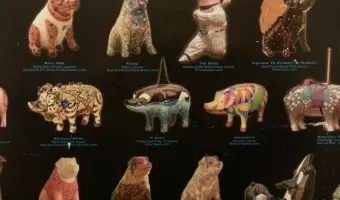
2001
Artists decorate over 200 models of Rachel the piggybank for a citywide event, Pigs on Parade. They were later auctioned to fund the Market's social services.
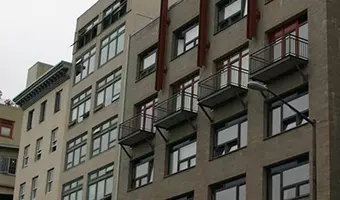
2006
Pike Market Senior Center opens in the new LaSalle annex building, the first new building in the Market in over 30 years.
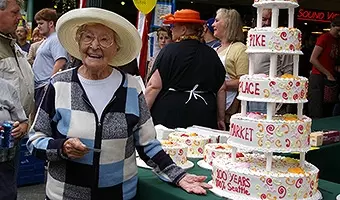
2007
Seattleites celebrate the centennial of the Market.
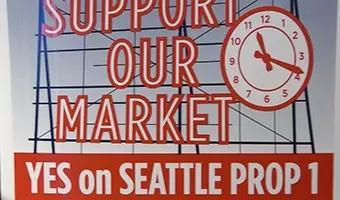
2008
Seattle voters approve a $71 million levy for Market renovations in November.
2010-2019

2012
The Pike Place Market PDA wins the Great Markets, Great Cities Award at the 8th International Public Markets Conference in September.
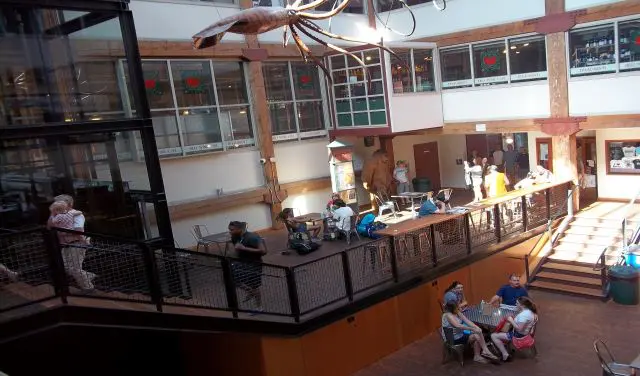
2012
After three years, the large-scale renovations are completed.
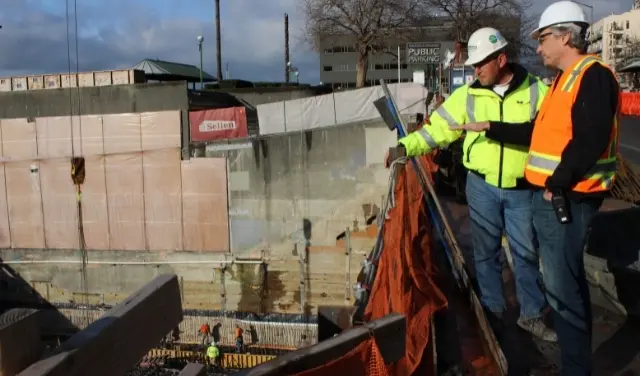
2015
MarketFront expansion breaks ground on June 24, 2015!
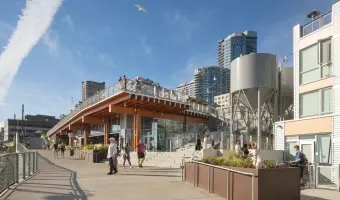
2017
Pike Place MarketFront Grand Opening celebration was held in June 2017.
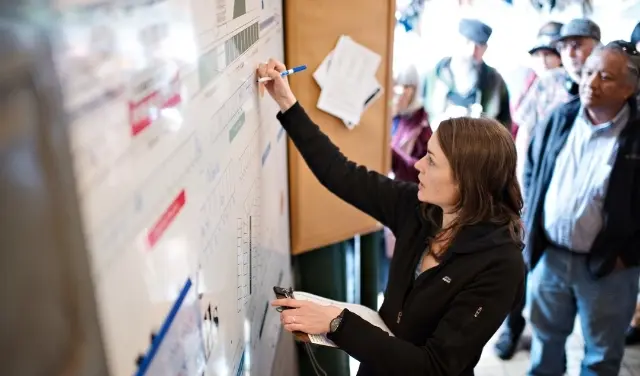
April 2018
Staff and the community came together to confirm a revised Hildt-Licata Agreement for another 10-year term, furthering the "Meet the Producer" tradition.
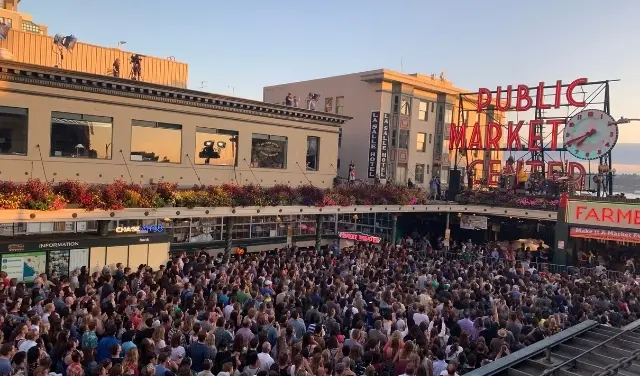
August 25, 2019
Pike Place Market welcomed back former Market buskers, The Head and the Heart to perform an unforgettable concert on the roof.
2020-2021
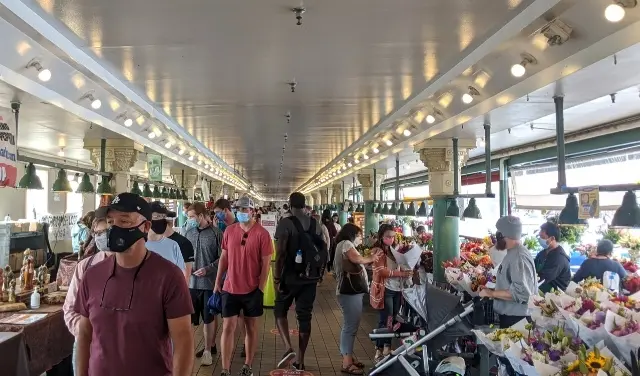
2020
The Market faces one of its most challenging threats to date, the COVID-19 global pandemic.
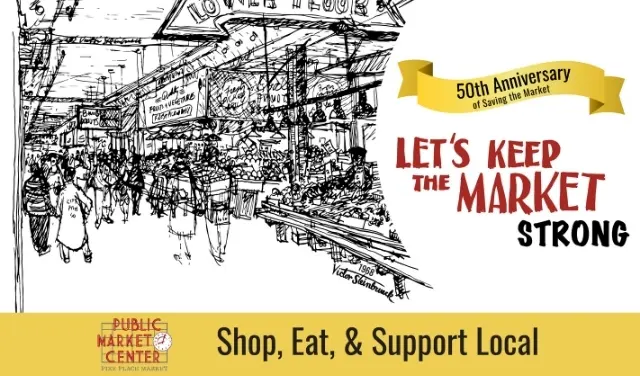
October 2021
The Market celebrates the 50th Anniversary of Seattle's "Keep the Market" vote.